Libraries That Mean Business: Helping Entrepreneurs Map Opportunity with PolicyMap

Libraries have always been engines of access and innovation. They’re also launchpads for entrepreneurs; connecting small business owners and local startups with the data and insights they need to grow.
PolicyMap combines thousands of economic, demographic, workforce, and community indicators into a single, easy-to-use mapping platform. By helping cardholders visualize neighborhood trends, assess markets, and identify promising locations, libraries are equipping residents to make informed business decisions—whether opening their first shop or expanding across town.
Libraries as Business Builders
Public libraries play an essential role in local economic development. The American Library Association’s Libraries Build Business initiative, launched with support from Google.org, proved how libraries can foster small business creation and community wealth. Even after the grant period ended, LBB’s model continues to influence library strategies through ALA’s Economic Opportunity Hub—connecting entrepreneurship, workforce readiness, and equitable access to information. Programs like Round Rock Public Library’s Biz.ability workshops show what’s possible when libraries pair practical training with access to local data. These programs come to life when local entrepreneurs use data to shape their next steps.
Mapping Opportunity
In Memphis, a food truck owner uses PolicyMap to locate neighborhoods that match her ideal market. Claritas PRIZM Premier data helps her focus on two lifestyle segments, young professionals and ambitious renters. At the same time, datasets on consumer spending, parks, and housing development point her to busy, active neighborhoods.
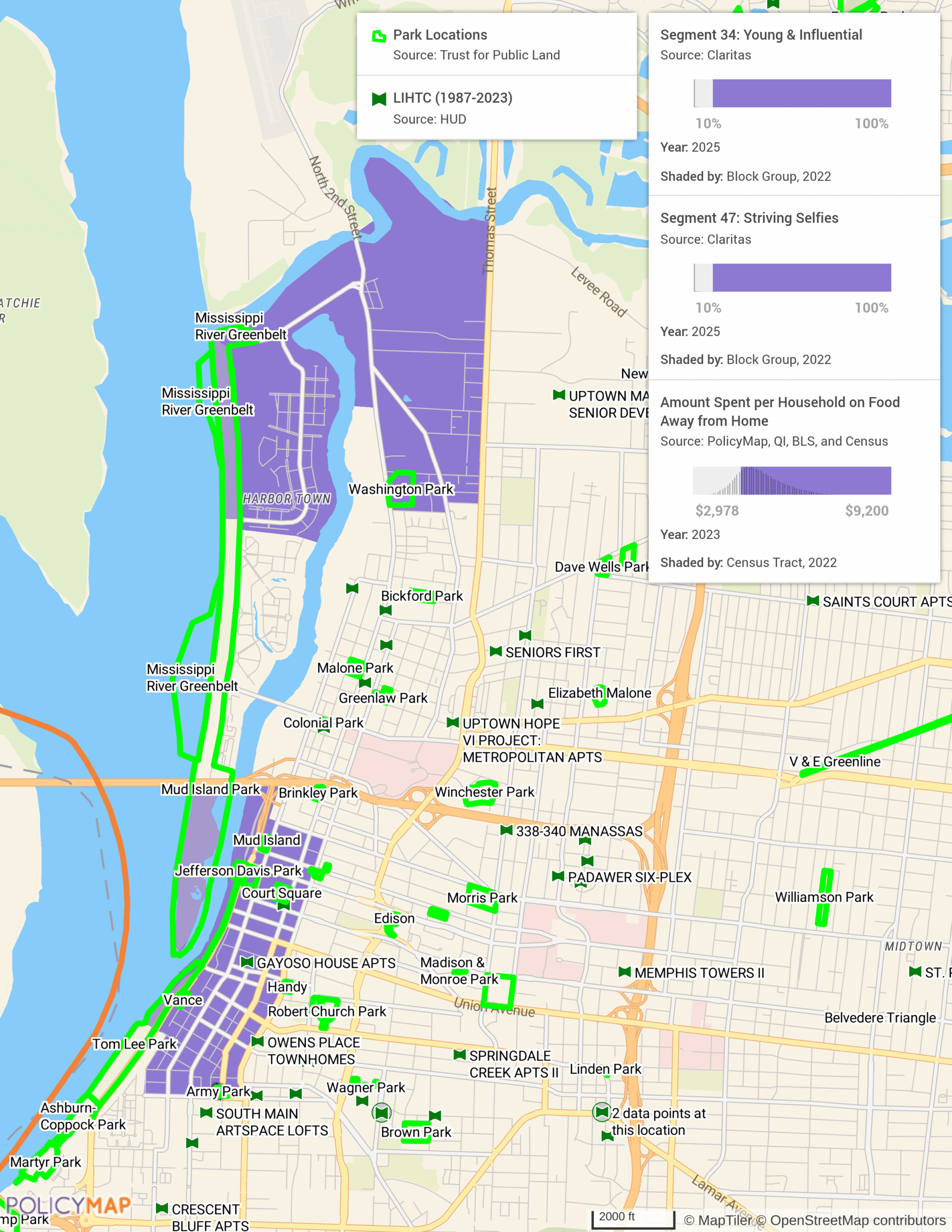
Investing Where It Matters
A young real estate investor in Cleveland is just starting out and wants to build something that matters. They explore Community Reinvestment Act (CRA) data and Housing Shortage and Surplus indicators to find neighborhoods that need more rental housing and qualify for reinvestment support.
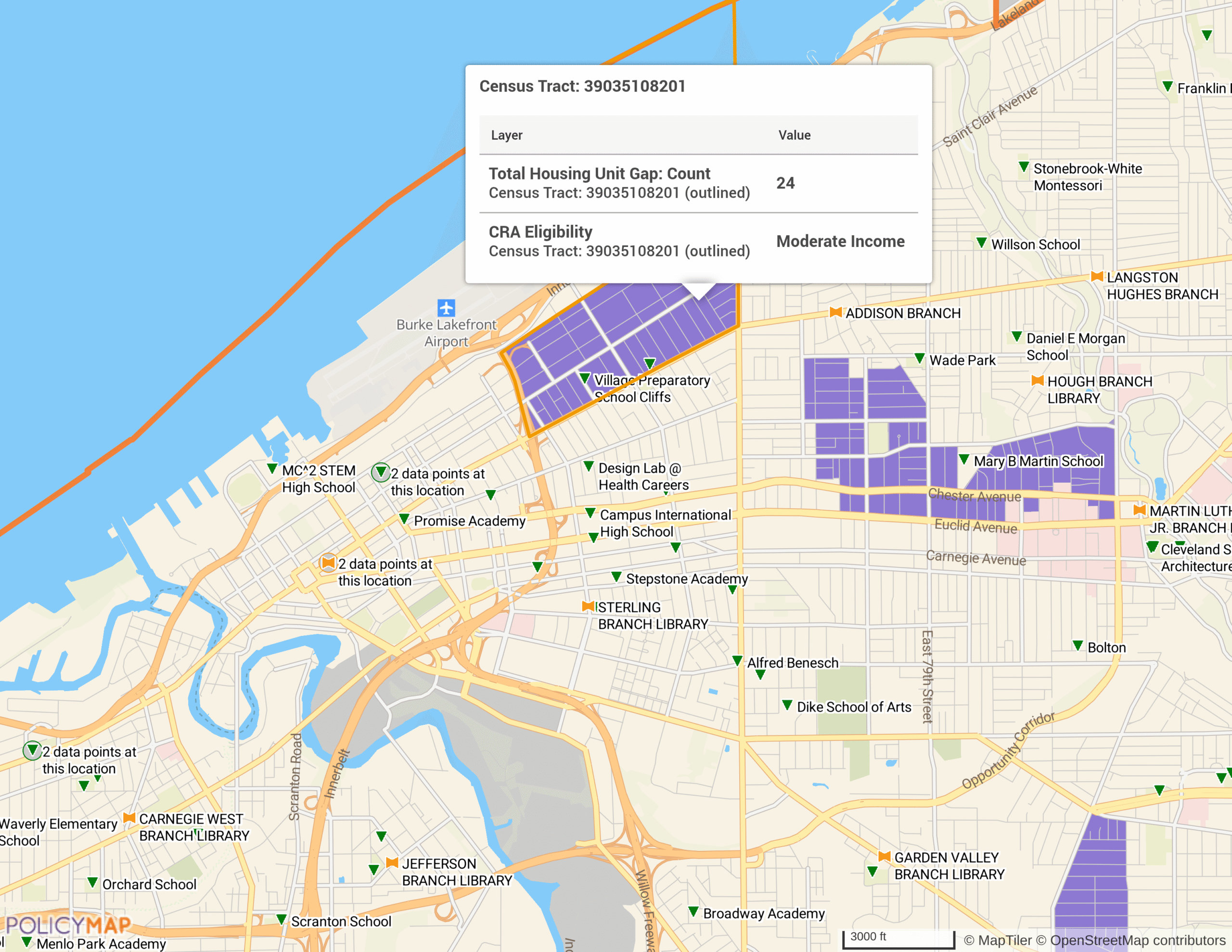
The map points to areas downtown where demand for apartments is high, banks are encouraged to lend, and residents live close to libraries, schools, and health centers that serve as community anchors. With help from local Community Development Financial Institutions (CDFIs) and nonprofit lenders, the new investor could buy and restore a small building, add affordable rental units, and take the first step toward building both a business and a stronger neighborhood.
Community Connections and Local Strength
A small business startup in Austin is looking for the right neighborhood to set up shop. Using PolicyMap, the owner explores Valassis’ business vacancy data along with the locations of universities and business incubators to find areas with available space and access to local talent.
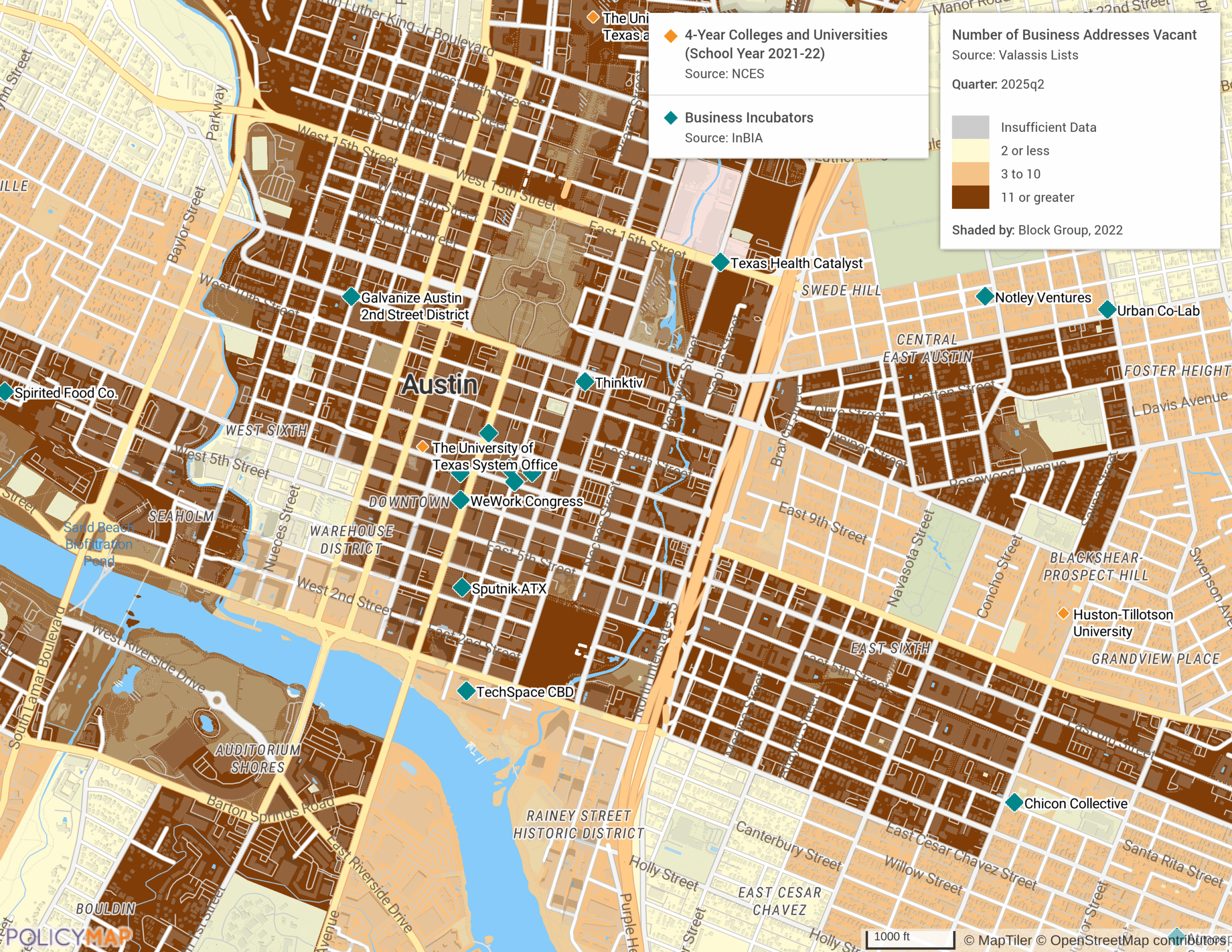
They explore other data points and layers showing schools, hospitals, nonprofits, and transit stops to understand how the neighborhood connects to the wider community. Workforce characteristics such as educational attainment, employment by industry, and commuting patterns reveal where skilled workers live and how they travel to work. Data on languages spoken at home and the foreign-born population provide additional context, helping the business understand the cultural and linguistic diversity of the area.
Finding the Right Place
In the Philly suburb of Ardmore, a café owner is ready to open a second location in a community with steady foot traffic and a strong local identity. She uses her library’s PolicyMap access to explore neighborhoods that reflect her current customer base: young professionals and families who value convenience, culture, and connection.
Claritas PRIZM Premier data on PolicyMap helps her analyze lifestyle segments across the region. Segments such as Connected Bohemians and The Cosmopolitans stand out as interesting targets—midscale urbanites and educated families who enjoy local coffee houses, organic dining, and community events. By layering these insights with data on income, walkability, and transit access, she identifies an area where her business can grow alongside the community.
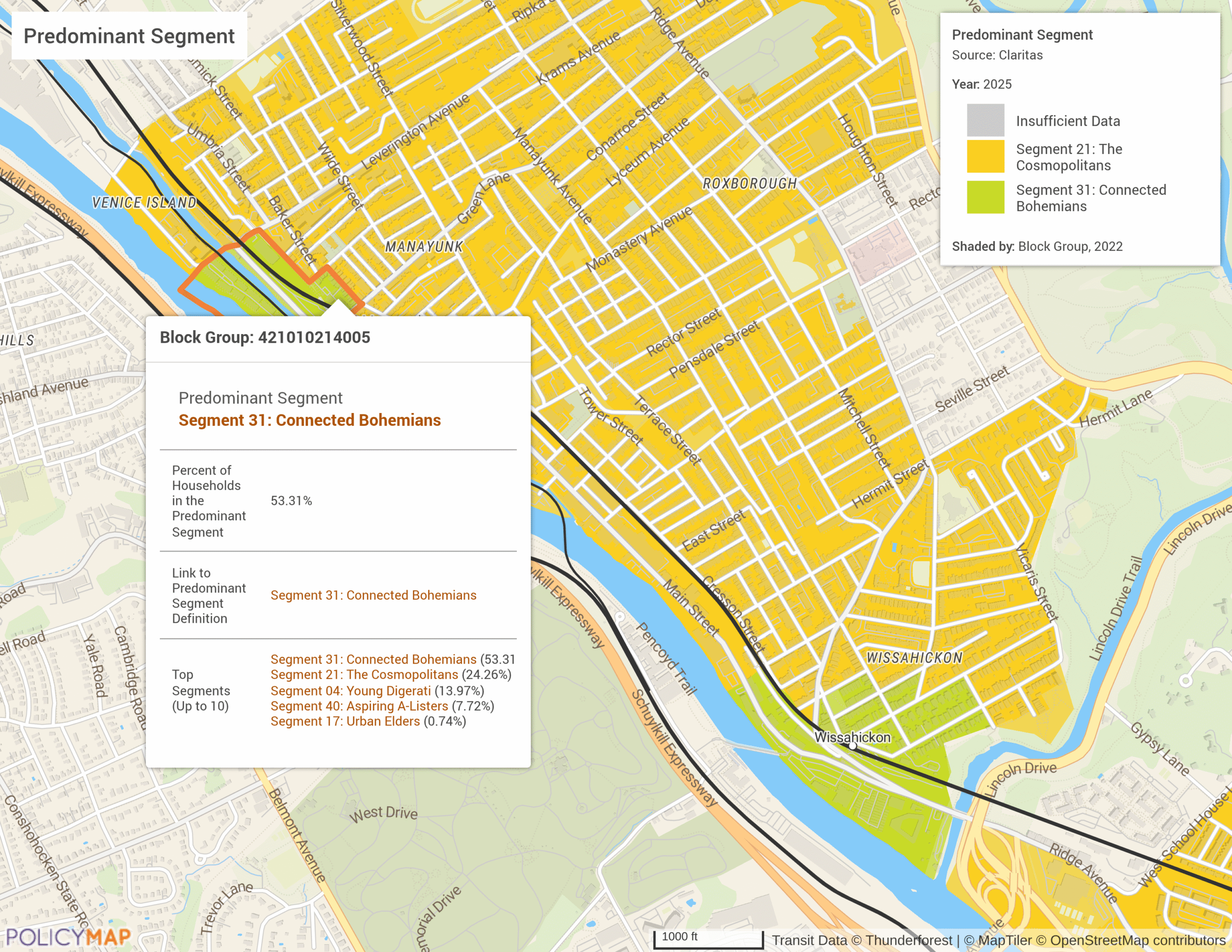
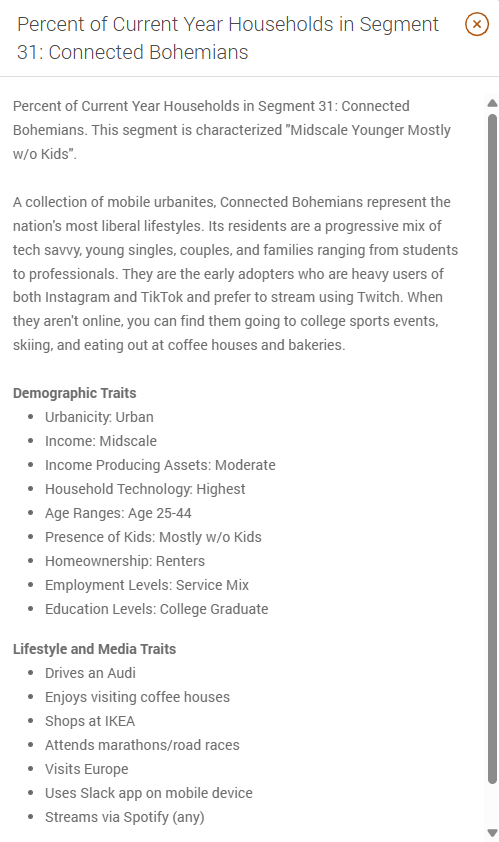
A Contractor Exploring Workforce Trends
A young building contractor accesses PolicyMap through his library to compare construction job markets and median rents across southern cities. Using Claritas lifestyle data, he learns that places like Jacksonville offer strong business potential and a beachside lifestyle, while Newport News and Winchester City provide similar community character and workforce opportunities at a lower cost. Seeing both professional and personal advantages, he makes plans to expand his business in a region that fits his goals and way of life. He can also pull up a Community Profile report that provides detailed information about age, income, households, and housing.
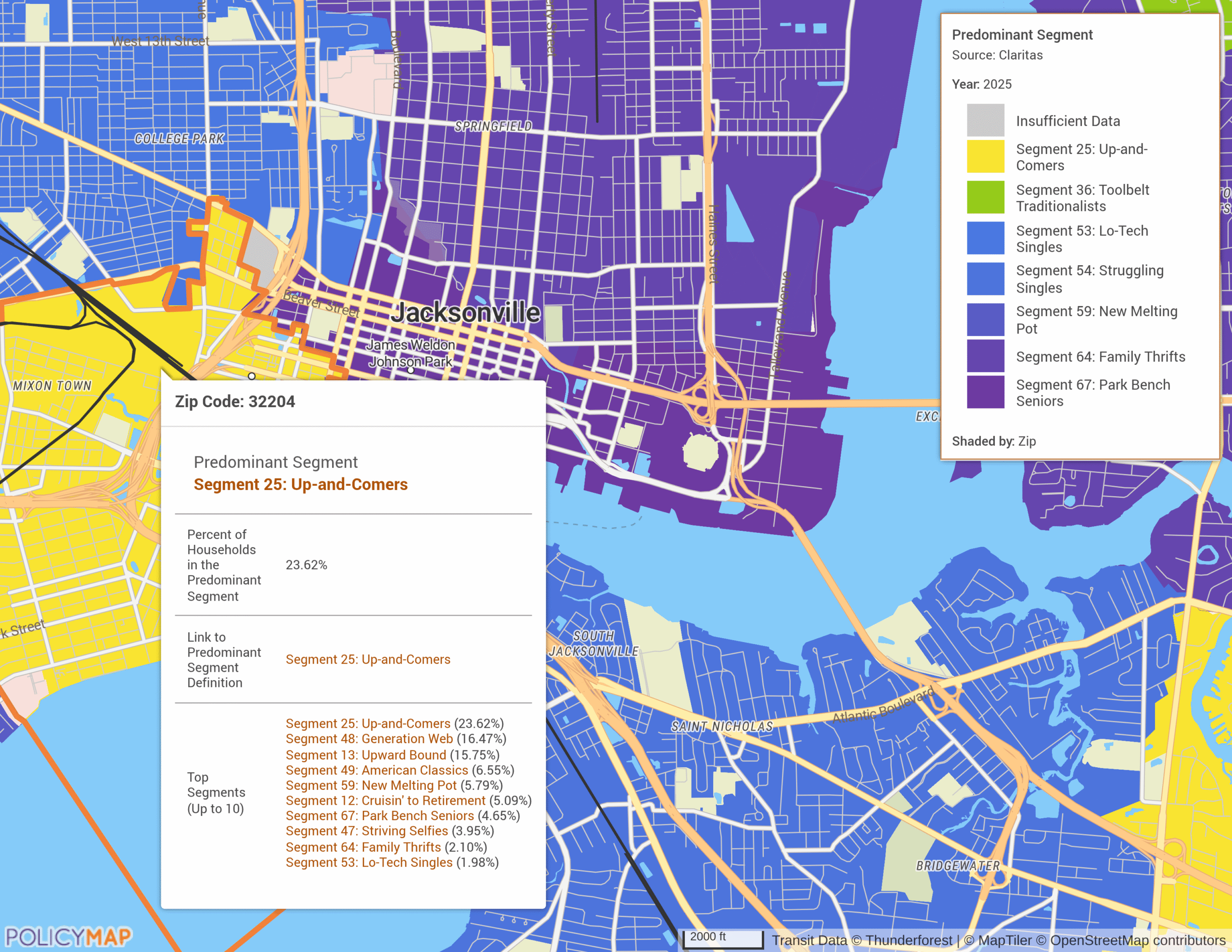
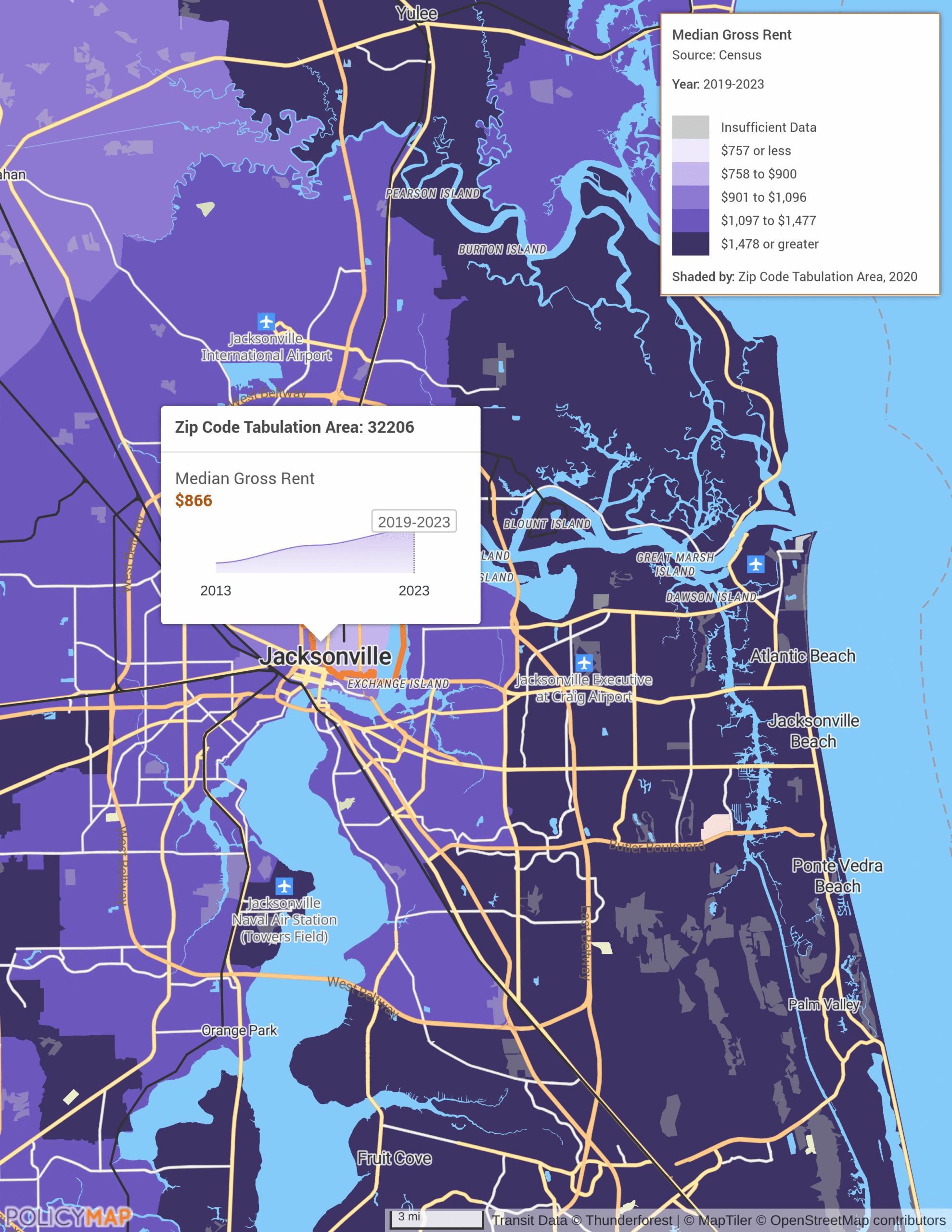
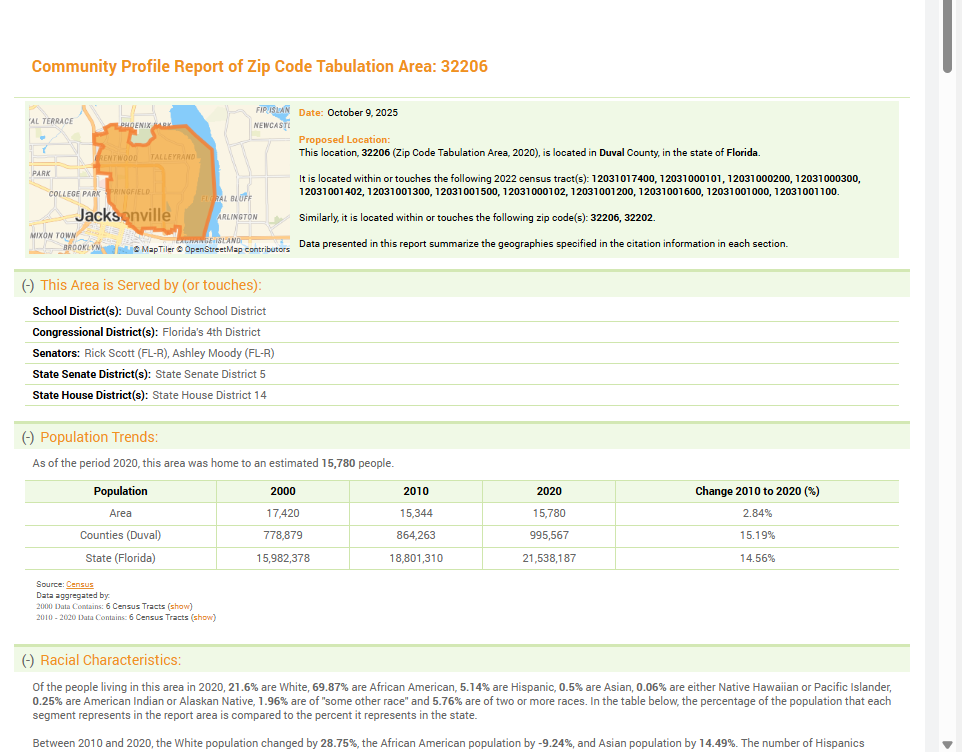
Data That Drives Growth
Libraries define what access to information means, moving from repositories of knowledge to catalysts for opportunity. With PolicyMap, libraries can empower entrepreneurs to:
- Discover neighborhoods ready for investment or expansion
- Analyze local workforce, education, and income levels
- Identify vacant spaces and market demand
- Connect with nonprofits, SBDCs, and community partners
- Build business plans rooted in real, local data
Every map tells a story—and for entrepreneurs, that story starts at their library.
Request More Information
Ready to help entrepreneurs turn data into opportunity? Fill in the form below to request more information about how your library can leverage PolicyMap to guide local business growth.